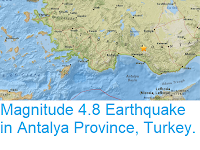Two men have died and a third was injured after a roof collapse at an unlicensed coal mine in Zonguldak Province, Turkey, on Saturday 7 July 2018. A third miner was injured in the incident, but managed to escape and raise the alarm, although rescue workers were unable to reach the mine in time to save the remaining workers. The dead men have been named as Erkan Cankurt, 45, and Hasan Yıldız, 30. A member of the rescue team also needed hospital treatment after developing breathing problems due to low oxygen levels in the mine.
The Turkish mining industry has suffered from a poor safety record in recent years, though efforts have been made to improve this since an accident in May 2014 in which over 300 miners lost their lives. The mine in which the men died on 7 July had been closed down by authorities in 2016, due to poor safety standards, but had apparently continued to operate illegally. The precise cause of the accident is still yet to be determined, though unlicensed mines tend to have poor safety standards. It is possible that the gas in the mine was caused by the miners encountering a pocket of pressurised mine gas within the coal seam, the release of which may have caused the rockface to partially collapse.
Coal is formed when buried organic material, principally wood, in heated and pressurised, forcing off hydrogen and oxygen (i.e. water) and leaving more-or-less pure carbon. Methane is formed by the decay of organic material within the coal. There is typically little pore-space within coal, but the methane can be trapped in a liquid form under pressure. Some countries have started to extract this gas as a fuel in its own right. When this pressure is released suddenly, as by mining activity, then the methane turns back to a gas, expanding rapidly causing, an explosion. This is a bit like the pressure being released on a carbonated drink; the term 'explosion' does not necessarily imply fire in this context, although as methane is flammable this is quite likely.
See also...
Rescue workers outside a mine in Zonguldak Province, Turkey, where two miners died on Saturday 7 July 2018. Hürriyet Daily News.
The Turkish mining industry has suffered from a poor safety record in recent years, though efforts have been made to improve this since an accident in May 2014 in which over 300 miners lost their lives. The mine in which the men died on 7 July had been closed down by authorities in 2016, due to poor safety standards, but had apparently continued to operate illegally. The precise cause of the accident is still yet to be determined, though unlicensed mines tend to have poor safety standards. It is possible that the gas in the mine was caused by the miners encountering a pocket of pressurised mine gas within the coal seam, the release of which may have caused the rockface to partially collapse.
The approximate location of the 7 July 2018 Zonguldak mine collapse. Google Maps.
Coal is formed when buried organic material, principally wood, in heated and pressurised, forcing off hydrogen and oxygen (i.e. water) and leaving more-or-less pure carbon. Methane is formed by the decay of organic material within the coal. There is typically little pore-space within coal, but the methane can be trapped in a liquid form under pressure. Some countries have started to extract this gas as a fuel in its own right. When this pressure is released suddenly, as by mining activity, then the methane turns back to a gas, expanding rapidly causing, an explosion. This is a bit like the pressure being released on a carbonated drink; the term 'explosion' does not necessarily imply fire in this context, although as methane is flammable this is quite likely.
See also...
Follow Sciency Thoughts on Facebook.








